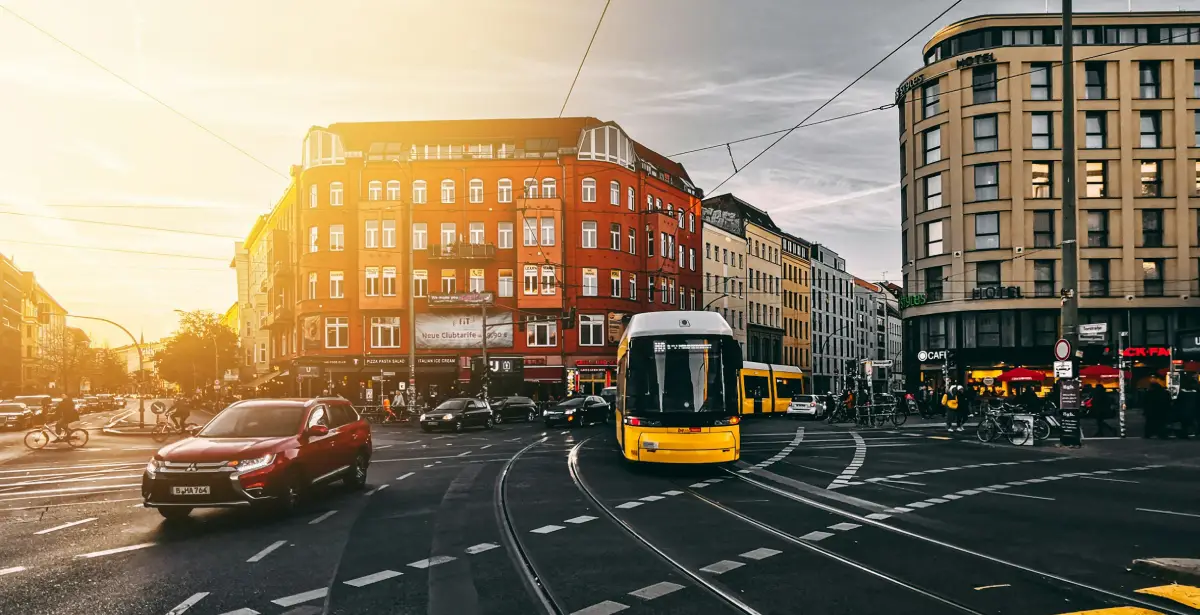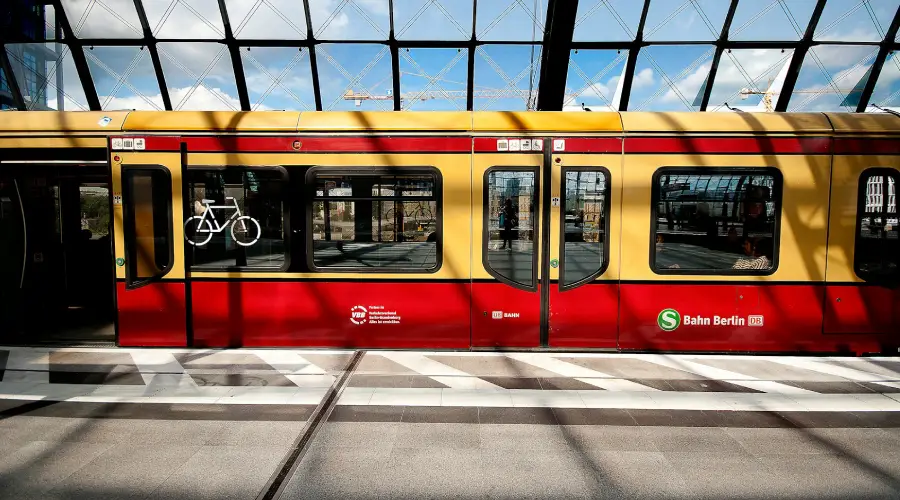How to get around Berlin

Berlin has so many attractions, destinations, and places to visit that it’s a surprise you can see even a fraction of the short time you have to spend there. Luckily, Berlin’s exhaustive public transport system is a perfect answer to all your problems because the multi-faceted transportation methods – from the Subway to the train and the bus, or the taxi for a more private option – will get you anywhere you want and back. Whether you’re a local or a visitor, the transport system is exhaustive enough to fulfill your daily requirements and allow you to explore the city, which is why understanding the many sections of each transport option is so important. Plus, once you understand which transport system applies when, you can also check out the Berlin Welcome Card, which is a popular travel pass that offers unlimited access to public transportation and discounts on various attractions.
Berlin Subway
The Berlin Subway is also commonly called the U-Bahn and is vital to the city’s public transport infrastructure. It is run by the Berliner Verkehrsbetriebe (BVG). It is part of the Transport Association Berlin-Brandenburg (VBB), which means that its tickets are also valid for the buses and the trains. In terms of what it looks like, the U-Bahn is known for its yellow-colored trains, which are pretty hard to miss.
Berlin Subway Map
The Berlin subway system is the best way to get around Berlin and consists of ten lines that cover around 146 kilometers. They serve 173 stations; while most lines operate underground, some run on above-ground tracks. The U-Bahn network is one of the most well-connected and covers the whole city, so you can easily reach your destinations, no matter where they are.
Berlin Metrocard
Passengers can purchase tickets at ticket machines located on subway platforms or at ticket counters in larger stations to travel through the subway routes. Due to the overlaps in managing authorities, these tickets are also valid for other modes of transportation within the VBB network. More than one ticket option is available, including single tickets, day passes, and weekly or monthly passes, depending on how much you intend to use the subway and for how long.
Berlin Subway Schedule
The U-Bahn operating hours are from 4 AM to 1 AM on weekdays, though night buses are available during off-hours. During the day, trains run every 5 minutes; at night, they run every 10 minutes. On weekends, however, the subway is open 24 hours, with U-Bahn running every 10 minutes during the day and every 15 minutes at night.
Berlin Train
Another Berlin public transport system is the train, the S-Bahn. It’s a light rail network that services most of the city, though it also focuses on the suburban areas to facilitate the people on the outskirts. The S-Bahn mostly operates above ground in the city center and is easily recognizable by its green and white S symbol, so you can always spot it.
Berlin Train Map
The Berlin train map covers most of the city, serving the city center, the suburban areas, and a few stops in Brandenburg. It also has 15 lines and around 170 stations, making it expansive enough to get you to your destinations, especially since it spans approximately 330 kilometers. For example, the S-Bahn’s east-west line connects stations Westkreuz and Ostkreuz. This line passes by most of Berlin’s famous landmarks, including the Berlin Central Station, Berlin Cathedral, Museumsinsel, and Hackescher Markt.
Berlin Train Tickets
As for the U-Bahn, S-Bahn tickets can be purchased at ticket machines, platforms, and major stations’ sales points. As for the other three, these are valid for other Berlin public transport. You can choose from single tickets for only one ride if you plan to use other means to return, day passes to maximize cost-efficiency, daily and weekly passes if you want to use the train a lot, or monthly passes for those staying for a while.
Berlin Train Schedule
The S-Bahn operates from around 4:30 AM to 1:30 AM on weekdays, and during this time, the trains run every five, ten, or twenty minutes, depending on the time of day. Weekends have the train running all day, though it runs only every half hour during the night. In peak hours in certain stations, trains may run every three minutes for easy access.

Berlin Bus
Another way for traveling around Berlin is the bus system, which is operated by the BVG and thus covers both the urban center and suburban areas. More importantly, these buses tend to cover routes not served by other public transportation, making them a perfect choice if the other options aren’t getting you where you need to go. Plus, the city’s double-decker buses also offer a pretty unique view of Berlin, so you can also do sightseeing as you travel through.
Berlin’s public bus system, operated by the BVG, covers the urban center and suburban areas. The buses often cover routes not served by other public transportation. The city’s double-decker buses offer a unique view of Berlin. During the day, bus lines 100 to 399 connect directly to central Berlin, though many stops are on the way. They also connect to many S-Bahn and subway stations.
Berlin Bus Map
The BVG sets the routes of the buses, but while it’s true that they service routes that are less considered by other Berlin public transport (train and U-Bahn), that doesn’t mean that these vehicles don’t also travel to the more popular parts of the city. For example, lines 100 to 399 connect the suburbs with central Berlin and many S-Bahn and subway stations while stopping at top attractions like Museumsinsel, Berlin TV Tower, etc. There are also express buses available that only serve key stops, making the trip faster, too, and these lines include the letter ‘M’ before the number as a descriptor.
Berlin Bus Schedule
All buses operate during the day, every day, and they do so at ten-minute intervals. During the night, Night Buses – marked with the letter N, run throughout, offering an alternative during late hours for the U-Bahn and S-Bahn as well. For example, night buses N1 to N9 replace the U-Bahn lines U1 to U9 from Monday to Friday, while night buses N10 to N97 replace the most important daytime bus lines.
Berlin Bus Tickets
As for the rail and the subway, tickets can be purchased as tickets for all three public transport options. You can choose from single tickets, day passes, daily and weekly passes, or monthly passes.
Berlin Taxi
Berlin has more than 8000 taxis available for hire, and they have the benefit of taking you directly to your destination, something other public transport options cannot promise since they will always accommodate other people, too. The city has also placed fixed rates on the taxis, which are applied 24/7, which is the time frame when taxis run, though the number of taxis does decrease during the night.
Berlin Taxi Price
The cost is fairly linear and standard since Berlin’s taxi fare is regulated. The regular rate includes an initial charge of €4.30 per kilometer, ranging from €2.10 to €2.80, which depends on the distance you have traveled. There’s also a waiting period charge of €39 per hour if you want to keep the car beside you. Secondly, short-distance rates apply for rides up to 2 kilometers and cost a flat rate of €6. Surcharges can apply for group rides, payments via vouchers or invoices, and journeys from BER Airport, but you can pay in cash or card, depending on your needs.
Book a Taxi in Berlin
You can book the taxi via call or through an app, or go the classic route to try hailing them down – though it doesn’t always work. Still, you can use the following phone numbers of the best taxi service in Berlin:
- Taxi Funk Berlin: +49 (0)30 44 33 22
- Funk Taxi Berlin: +49 (0)30 26 10 26
- Quality Taxi: +49 (0)30 26 30 00
- Würfelfunk: +49 (0)30 21 01 01
- City Funk: +49 (0)30 21 02 02
- EcoTaxi: +49 (0)30 210 10 20

Berlin Welcome Card
This particular card is a tourist ticket that offers discounts on more than 180 attractions and makes your travels to Berlin much easier. But, more importantly, it’s a ticket to all of the public transport options in Berlin. The Standard Welcome card has limited benefits, but it provides access to all public transport in tariff zones AB, and depending on your charge, it can be valid from 48 hours to 6 days, and the cost starts from €26.
The second option is the Berlin Welcome Card plus the Museum Island addition, valid for 72 hours and includes all the standard benefits and those relating to Museumsinsel. This starts from €54. Lastly, there’s the ‘All Inclusive’ Welcome Car, which has the benefits of the above and more, including free admissions to 30+ locations, hop-on, hop-off tours, etc. This starts from €99.